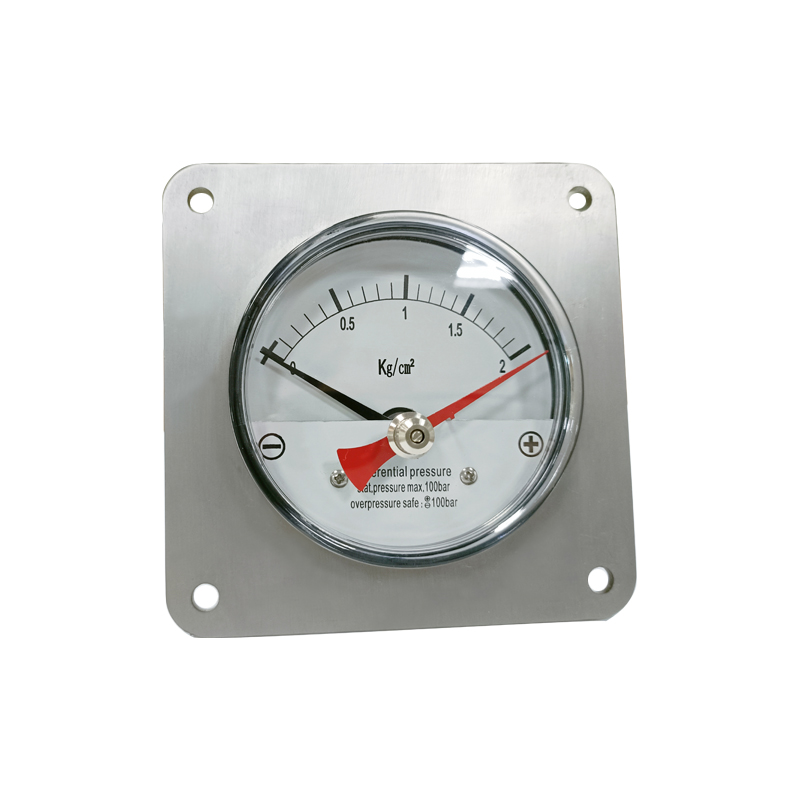
Ago . 19, 2024 16:04 Back to list
Digital Differential Pressure Gauge Options for Accurate Measurement and Monitoring Systems
Understanding Digital Differential Pressure Gauge Products
In various industrial applications, precise pressure measurement is vital for system efficiency and safety. One of the standout tools for achieving accurate pressure readings is the digital differential pressure gauge. These innovative devices play a crucial role in monitoring the pressure differences between two points in a system, making them indispensable in fields such as HVAC, manufacturing, and process control.
The Basics of Differential Pressure Measurement
At its core, a differential pressure gauge measures the difference in pressure between two discrete points. This can be essential for assessing the performance of filters, monitoring fluid flow, and ensuring that processes operate within specified parameters. Traditional analog gauges have been used for years, but the advent of digital differential pressure gauges has significantly enhanced measurement accuracy and ease of use.
Key Features of Digital Differential Pressure Gauges
Digital differential pressure gauges come equipped with several features that set them apart from their analog counterparts
1. High Accuracy and Precision Digital gauges utilize advanced sensors that provide better accuracy than mechanical gauges. They can measure minute pressure changes, making them ideal for sensitive applications.
2. Ease of Readability With clear digital displays, these gauges present data in an easily interpretable format. Many models offer backlit screens that enhance visibility in low-light conditions, reducing the likelihood of misreading.
3. Data Logging and Connectivity Many modern digital differential pressure gauges have the capability to log data over time, allowing users to track variations in pressure. Some advanced models can connect to smartphones or computers via Bluetooth or USB, facilitating easier data analysis and reporting.
digital differential pressure gauge products

4. Range of Applications These gauges can be used in various environments, including clean rooms, manufacturing facilities, and HVAC systems. They help monitor pressure drops across filters, ensuring optimal performance and preventative maintenance.
5. User-Friendly Interface Most digital gauges feature intuitive controls that allow for easy setup and adjustments. Users can often switch between different measurement units and customize settings without needing extensive technical knowledge.
Applications in Industry
Digital differential pressure gauges are pivotal in multiple sectors. In the HVAC industry, they help maintain balanced airflow and assess filter efficiency by monitoring pressure drops. In the pharmaceutical and food industries, they ensure that clean room environments meet strict regulatory standards by continuously monitoring pressure differentials that could indicate contamination risks.
Additionally, in the oil and gas sector, these devices are crucial for ensuring the safe operation of pipelines and storage facilities by tracking pressure differences that could signal leaks or blockages. Their ability to provide real-time data allows operators to respond swiftly to potential issues, thereby enhancing safety and operational efficiency.
Choosing the Right Digital Differential Pressure Gauge
When selecting a digital differential pressure gauge, several factors must be considered, including the pressure range, accuracy requirements, environmental conditions, and specific applications. Users should also look for gauges with robust construction suitable for their operating conditions, as well as consider whether features like data logging or connectivity are necessary for their operations.
Conclusion
Digital differential pressure gauge products represent a significant advancement in pressure measurement technology. Their precision, ease of use, and diverse applications make them essential tools for a variety of industries. As businesses increasingly rely on automated and data-driven solutions, investing in high-quality and reliable digital differential pressure gauges is a step toward enhancing operational safety and efficiency. Together, these instruments contribute to streamlined processes and improved performance across many sectors.
-
High-Precision 5 Valve Manifold Differential Pressure Gauge Suppliers
NewsApr.29,2025
-
High-Precision Diaphragm Vacuum Pressure Gauges Manufacturers & Quotes
NewsApr.29,2025
-
Omega Differential Pressure Gauges High Accuracy & Durability
NewsApr.28,2025
-
Low Pressure Differential Pressure Gauges Precision Solutions & Quotes
NewsApr.28,2025
-
Digital Diaphragm Pressure Gaauge Precision Measurement & OEM Quotes
NewsApr.28,2025
-
Differential Pressure Gauge China Price High-Accuracy & Best Quotes
NewsApr.28,2025
